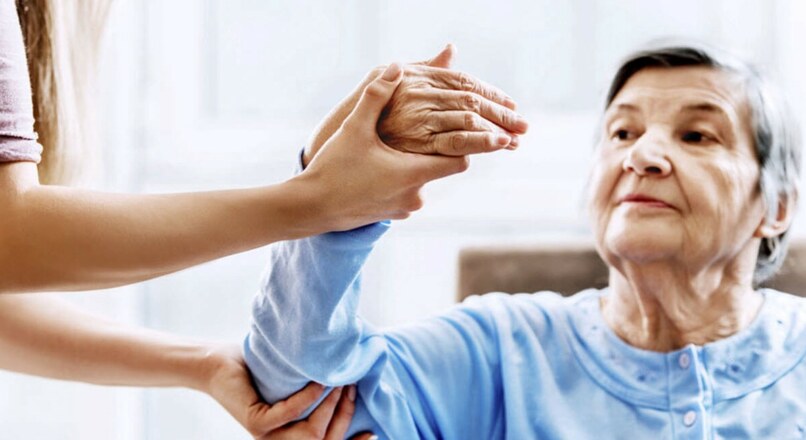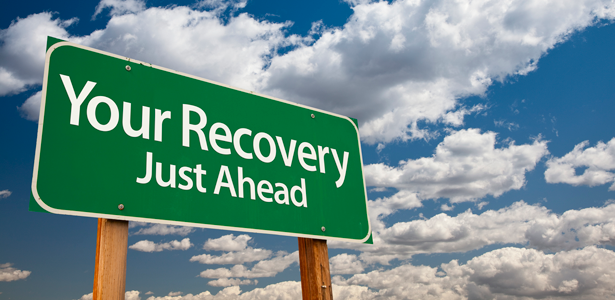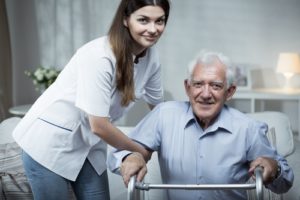
Stroke Recovery In The Elderly: What to Expect from Rehabilitation Therapy
Approximately 795,000 people in the U.S. have a stroke each year (for 75% it’s their first stroke). It is one of the leading causes of long-term disability in the U.S. Following a stroke, the good news is there is potential to make a great come back with the right medical care and perseverance.
Having a stroke can be a scary and trying time for both the patient and family during the recovery process. Knowing what to expect from post-stroke treatment can relieve some of the stress and help everyone focus on the positives: like getting better!
Determining the Severity of a Stroke.
A stroke can affect any area in the brain, but the most common blockage is in the middle cerebral artery. How an individual is affected by the stroke and the severity is very dependent on where in the brain the stroke happened and how long tissues were deprived of blood and oxygen. There are some common deficits that will be assessed and addressed with a medical professional.
These include:
- Weakness that usually affects one side of the body
- Trouble initiating and completing a task efficiently
- Poor awareness of one side of the body
- Poor sensation on one side of the body
- Uncontrollable tightening or flaccidity of certain muscle groups
- Bowel and bladder issues
- Trouble speaking
- Poor balance
- Limited cognition.
These can all cause inefficient movement patterns for daily activities like walking and transfers, making safety an issue for returning home independently.
For more details related to a stroke, check out this great resource on the different types of strokes.
Who Helps with Recovery?

How big your medical team will depend on the setting you go to following your hospital stay and how severe the stroke is at that time. For different discharge options, check out this article we did called “Discharging Elderly Patients from the Hospital: What To Expect“.
Regardless of setting, you can expect to see your medical doctor for regular check ups to assess your overall health as you recover. From there, expect to see an occupational, physical and speech therapist often. The frequency and what therapy you do more of will be dependent on your deficits and what you can tolerate.
As a team, these therapists will discuss your biggest concerns for regaining independence and get you to work! Supportive family (or friends) can also play a big role in recovery and they can get all the tips they need to effectively help from the treating medical team.
Why Treatment is so Crucial
Entire areas of your brain were deprived of oxygen, leading to your specific functional limitations. The best way to return oxygen to this area is to start using that part of the brain.
The brain is at a very crucial crossroads when it is first injured, so if you start stimulating and using it again there will be a much higher chance of recovery.

Specifically, occupational therapy will look at what tasks you are having trouble with for daily activities (showering, toileting, cooking, laundry, etc.).
Physical therapy will look at your ‘big picture’ deficits related to transfers, walking, stairs and bed mobility. Speech therapy will assess your cognition, memory, speech and ability to make safe logical decisions (like taking medications responsibly).
Together, they will create a multifaceted approach to stimulate the brain and body. Whether it is all guided by a therapist or you do some treatment on your own, typically more stimulation is better as long as you don’t get over-fatigued.
Restorative vs. Compensatory Treatment
Starting therapy right after a stroke can accelerate and improve odds for a full recovery, even with severe cases. However, there may be room for improvement even several years down the road with the right treatment. The process can be slow but rewarding as small steps are taken to improve quality of life and function.
As the brain starts to heal (a slow process) little changes will start to happen. No matter how close you get to your pre-stroke self, the good news is that you will adapt.
There are so many great adaptive tools out there nowadays to help you overcome your deficits if needed. Some of these tools may include a Rollator Walker, cane, joint braces, memory devices, and reachers. You and your therapists can be creative with finding ways to adapt to your environment as you recover.
After a stroke, you can expect to be pushed hard with therapy. With dedication and a positive attitude, you will be amazed at what you can do with a little help along the road to recovery.

Leave a reply